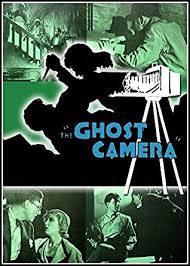
John Gray (Henry Kendall) has just returned from holiday. Unpacking his car he finds a camera that doesn’t belong to him. Wanting to return it to the rightful owner he decides to develop the last image. Perhaps it will tell him something about the owner. When the negative is developed he sees that the image is of a man being stabbed by another man. Before he can to anything about the negative he is called away to the door. When he returns the camera is gone and so it the negative.
Puzzled, and a little concerned, he develops the remaining four photographs. The first is of a woman standing in front of a doorway. The house says Mill Street on it. His curiosity and worry about what has happened sparks him to find the woman in the picture. Unfortunately there are several Mill Streets in greater London so it takes a little knocking on doors to find the right one.
The woman turns out to be May Elton (Ida Lupino). The camera belongs to her brother Ernest Elton (John Mills). Ernest is missing. She hasn’t seen him since Saturday and is worried about him. With May in tow, John’s search leads him to follow the trail left behind by the other four pictures in the camera. While searching for Ernest, what John unravels is a notorious jewel heist and murder.
Sinister forces are also following the trail and John and May are in more danger than they realize.
“The Ghost Camera” was released in 1933 and was directed by Bernard Vorhaus. The movie is about an hour and six minutes long. It is one of a plethora of British films known as ‘quota quickies’. These films are similar to the poverty row films that were made in America.
In 1927 British movie houses were required by law to show a certain percentage of British made films. This was called the Cinematographic Films Act. The purpose of the law was to reduce the influence of other cultures, especially American culture, and to promote the British film industry.
This resulted in British film companies churning out small movies with small budgets. Like the poverty row films, many of the quota quickies were crap. There were, however, some very good gems mixed in with all the paste. Many burgeoning actors got their start and many fledgling directors would cut their teeth on these little wonders.
Unfortunately many of them are considered lost films.
“The Ghost Camera” is one of the gems. The movie was a fun mystery with some really good humor and good performances. Since these films were short they were trim and neat. No padding meant a more enjoyable experience that didn’t get bogged down with boring filler.
The movie is truly good and for some reason obscure, surprising since it features a young John Mills and a very young Ida Lupino. And let’s not forget Henry Kendall as John Gray whom I have a fondness for in film. The movie isn’t impossible to find, but you may have to do a little looking for it. Knowing that it exists is half the battle.

